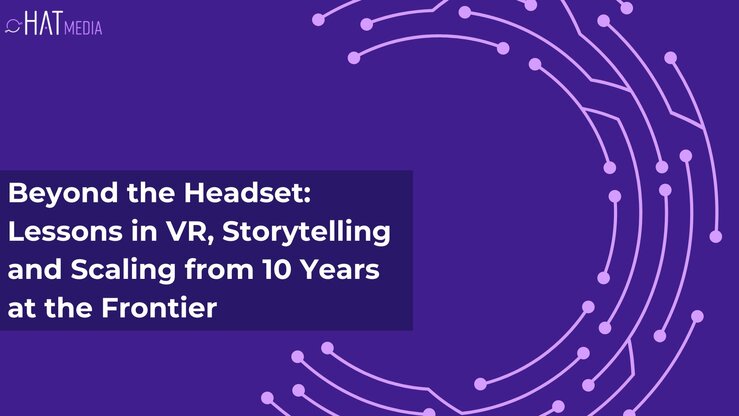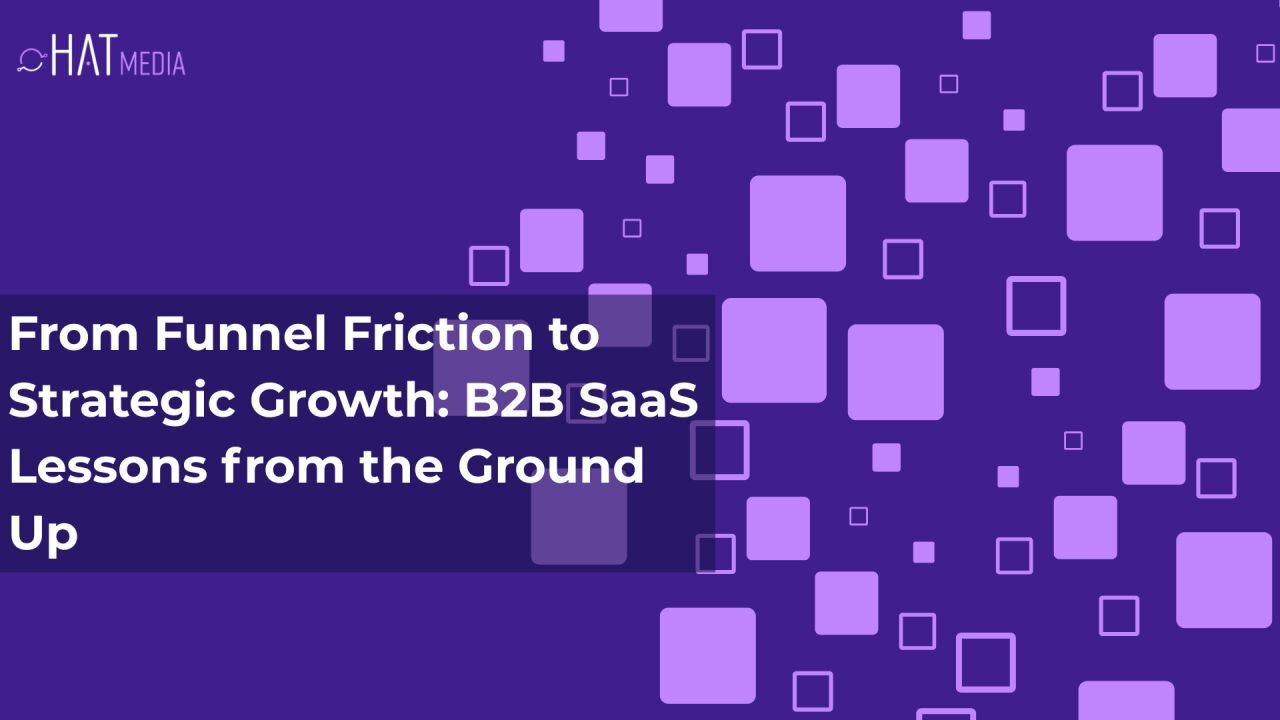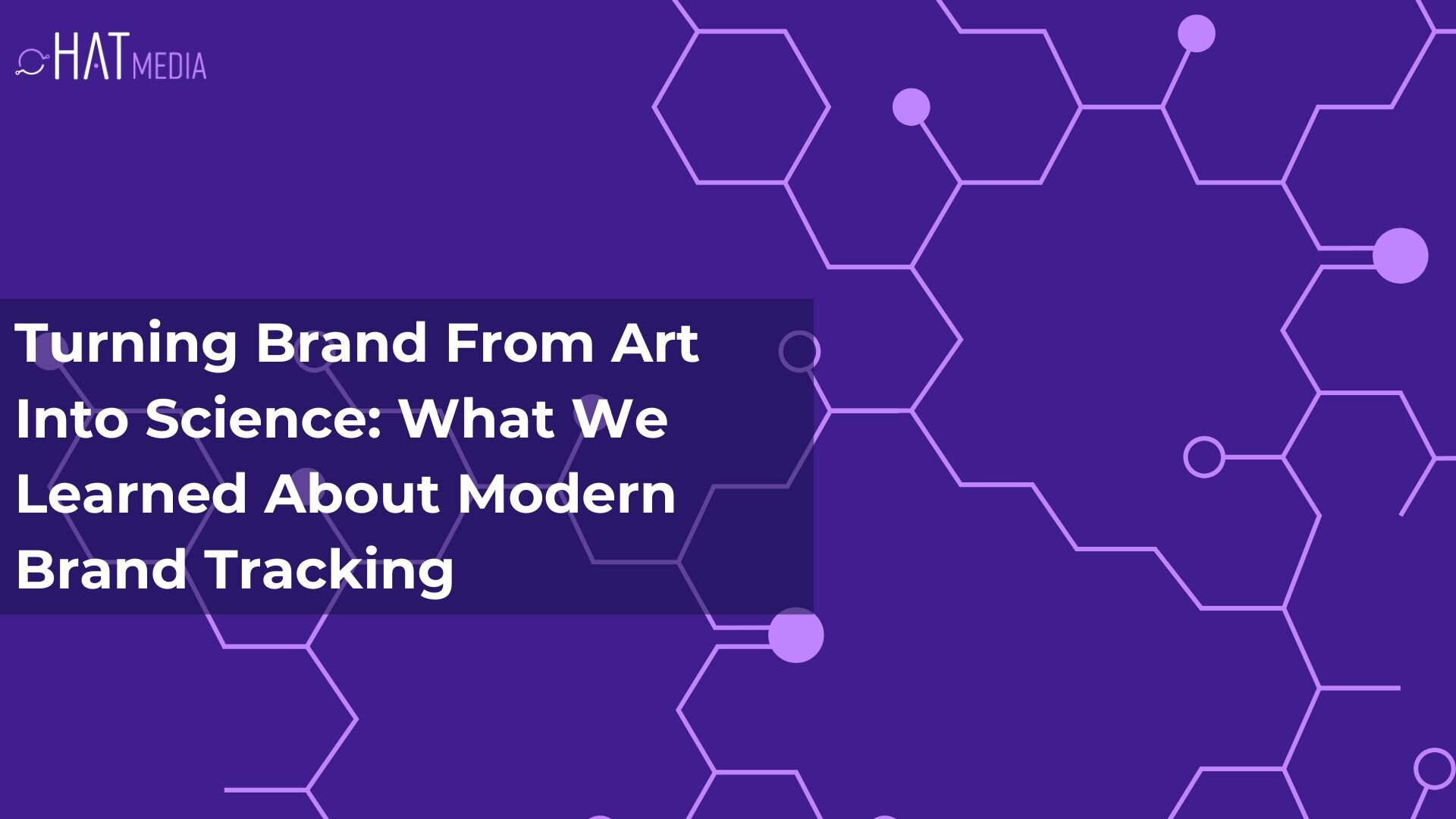Beyond the Headset: Lessons in VR, Storytelling and Scaling from 10 Years at the Frontier

Virtual and augmented reality are no longer niche technologies reserved for gamers or futurists. In certain sectors, they are quietly becoming some of the most effective tools for training, onboarding, content marketing and customer engagement.
Angus Stevens, CEO and co-founder of Start Beyond, has spent the last decade building immersive solutions for industries from retail to healthcare. In a recent SaaS Stories conversation, he shared practical insights that go beyond the hype and revealed why the key to making VR and AR work is less about the technology itself and more about storytelling, focus, and strategic growth.
1. Focus Wins Markets
One of the most significant decisions in Start Beyond’s journey was not about adopting a specific technology. It was about choosing what not to do.
In the early days, the company worked across entertainment, education and content marketing. While that breadth created opportunities, it also split attention and diluted resources. The breakthrough came when they decided to focus on training and content marketing.
The lesson for any SaaS or B2B leader: even if you have multiple potential markets, you will scale faster by aligning your leadership, team and product vision around a single strategic direction.
2. VR’s Real Power Is in Retention and Recall
VR is immersive by nature, but the real advantage for training and marketing comes from information retention.
Stevens explains that three minutes in VR can deliver ten minutes’ worth of content in a traditional format. With the headset on, distractions disappear. Users are fully engaged, which means they not only absorb more but also remember more.
The same principle applies to any high-engagement medium: create environments (physical or digital) where the audience can focus entirely on your message without competing stimuli.
3. Enterprise VR Is Here, It Is Just Not Always Public
While consumer VR adoption is slower than predicted, enterprise VR is thriving, particularly in training, onboarding and operational simulation.
From retail staff learning customer service scenarios to technical teams practising complex procedures, VR allows people to experience real-world situations without the real-world risks. The industries are varied, but the driver is the same: better, faster learning at scale.
4. The Two Sales Archetypes and Why You May Need Both
Stevens uses an analogy familiar to many in B2B: the hunter and the farmer.
- Hunters chase new clients, spot opportunities, and move fast to close deals.
- Farmers nurture existing relationships, expand accounts, and ensure steady long-term growth.
Start Beyond has relied heavily on founder-led hunting. The next growth step is bringing in farming talent to deepen relationships with the enterprise clients they have already won.
For SaaS companies, especially those selling complex solutions, balancing the two can be critical for sustainable growth.
5. Storytelling Drives Technology Adoption
Even in a technology-led business, Start Beyond starts every project with two deceptively simple questions:
- How do you want the audience to feel?
- How will they consume the content?
The answers guide whether VR, AR, mobile or another medium is most effective. This approach flips the usual tech-first thinking on its head. Instead of asking, “How can we use VR here?” the better question is, “What will make the audience feel, think or act differently, and what is the best medium for that?”
6. Not All AI is Ready for Prime Time
Like many SaaS companies, Start Beyond has experimented with AI in both production workflows and content creation. Some applications, such as image enhancement, content personalisation and voice synthesis, have been highly effective.
Others, like AI-driven avatar conversations, are promising but still hampered by lag and inconsistency. Stevens’ stance is clear: do not sacrifice quality or learning outcomes for the sake of using AI. Wait until the technology can truly enhance the user experience without breaking immersion.
7. Culture is Built on Alignment
For Stevens, running a tech company is as much about values as it is about innovation. Start Beyond’s culture is built on respect, trust, authenticity, and autonomy, and that alignment starts with leadership.
Without shared values, even talented teams can pull in different directions. With them, it becomes easier to attract like-minded clients, build long-term relationships, and retain top talent.
8. Give Yourself (and Your Team) Permission
Perhaps the most personal insight from the conversation was this: give yourself permission.
That might mean permission to try a new growth strategy, enter a new market, experiment with an unfamiliar technology, or even to pursue personal creative projects outside of work.
In Stevens’ case, encouraging team members to maintain creative outlets, from filmmaking to game development, enriches both their personal fulfilment and their professional output.
Wanting More? Listen to the Full Episode
Want to hear the full conversation with Angus Stevens, complete with real-world examples from Woolworths, St John Ambulance and more?
Onboarding Is Your Moment of Truth, Not Your Handoff
One of the first things Rachael made clear: retention doesn’t start at the first renewal. It starts immediately after the contract is signed.
It’s a crucial mindset shift. Many teams treat onboarding like a project plan. A set of checkboxes. Something to “get through.” But in truth, it’s the moment a customer decides whether or not they believe you can deliver on what was promised.
At Evisort, this meant rethinking onboarding entirely. Rather than a generic walkthrough, they created a guided, certifiable learning environment. They called it their customer academy and its purpose wasn’t to show off features, but to build confidence. Customers who complete the Academy even receive a badge.
The takeaway? When you invest in education and empowerment from day one, you increase product usage, reduce support tickets, and most importantly set the foundation for trust. That trust fuels everything that comes next. As Rachael states, if you do onboarding well, customers "forgive you a lot for a lot of things after that because you've established a relationship".
Post-Sale Experience Is a Revenue Driver, Not a Cost Centre
One of the more striking parts of our conversation was this idea: customer experience is not a service function it’s a growth function. Too often, companies treat customer support as a safety net, something reactive. But leading SaaS orgs are beginning to view their customer teams as essential growth drivers with commercial goals, not just satisfaction targets.
This looks like:
- Proactively identifying upsell and cross-sell opportunities based on product usage, and building out the product portfolio to offer more solutions.
- Partnering with marketing to deliver lifecycle content that drives maturity.
- Tracking leading indicators of health, not just lagging ones like churn or NPS.
Rachael explained that when customer success, marketing, and product are aligned around common KPIs like Net Revenue Retention (NRR), the business doesn’t just keep customers, it grows with them. This is especially powerful in a world where CAC is rising, outbound is noisier than ever, and renewals are no longer guaranteed. As Rachael emphasises, her philosophy for customer success as a Chief Customer Officer "is revenue" customers need to "stay and grow"
Feedback Loops Should Be Embedded, Not Periodic
Another standout point: if you’re only collecting feedback once a year, you’re missing the signal.
Rachael spoke about the need for “always-on” listening.” At Evisort, feedback doesn’t just happen via formal surveys. It’s embedded into the journey: A short sentiment pulse after onboarding.
- Friction alerts based on usage gaps.
- Micro-check-ins after key success milestones.
For example, her team uses a simple five-circle PowerPoint slide for quarterly meetings, asking customers to rate different aspects of the relationship with "red, yellow, or green".
This creates what she described as real-time intelligence, the ability to adjust in the moment, not just retroactively fix mistakes months later. It also builds internal momentum. If product, support, and marketing teams have access to this feedback, they can course-correct faster and deliver more relevant experiences whether it’s fixing a UX issue or updating messaging to reflect customer language.
AI is Only Useful If It Enhances Human Connection
There’s a lot of buzz around AI right now and Rachael was refreshingly honest about it. Yes, her team uses AI for document intelligence, gaining insights on legal and business documents to help companies reduce spend, increase revenue, and mitigate risk. She also mentions AI for summarizing meetings and automating reporting. But the purpose is always the same: to make human connection more meaningful.
One example she gave: after using Gong to analyse customer sentiment at scale, her team didn’t just stop at the insight. They used it to trigger personal, empathetic outreach.
This is a lesson many SaaS teams need to hear: if your AI investments are just about internal efficiencies, you’re missing the point. The real value comes when AI makes your customers feel more seen, more supported, and more successful.
As Rachael explains, AI should "free us up to do, spend more time with clients, which is what we should be doing”.
The golden rule? Automate context. Personalise connection.
Cross-Functional Alignment Is the Hidden Accelerator
Something that came through again and again in the episode was the importance of internal alignment. Rachael talked about how customer success is a "team sport". Support doesn’t live in a vacuum.
Neither does onboarding. Or marketing. Or product.
In her view, customer experience is the output of everyone's work which means everyone needs to be aligned on:
- What success looks like for each segment.
- What the key value moments are.
- What tools, content, or support customers need at each stage.
She even shared that at Evisort, their internal teams meet regularly to review customer journeys, not just revenue numbers. They look at drop-off points, common questions, and feature adoption trends all with the goal of building a better experience end-to-end. This is where many SaaS orgs fall short. Without shared ownership, experience becomes fragmented and so does retention.
Why Advocacy Doesn’t Just Happen It’s Earned
A final insight worth highlighting: referrals aren’t a marketing campaign. They’re the outcome of real customer wins.Rachael noted that customers become advocates when they:
- See tangible ROI.
- Feel deeply supported and trust you to help them achieve their end goals.
- Are proud to align their own brand with yours.
This flips the script. Rather than gamifying referrals with discounts or perks, great SaaS companies earn advocacy by helping their customers win.
In fact, Rachael noted that "quite a bit of the net new business" at her last company came from repeat or referenced customers, a phenomenon they tracked and called "virality".
Want more referrals? Don’t build a better program. Build a better experience.
Closing Thoughts
What made this conversation with Rachael so valuable wasn’t just the strategies or success stories, it was the clarity she brought to something many SaaS companies still overcomplicate.
Customer experience isn’t fluff. It’s not a department. It’s not a post-sale add-on.
It’s your competitive advantage if you design it that way.
If you're scaling a SaaS business today, this is your reminder: the most powerful growth lever isn’t paid ads or a new outbound sequence. It’s what your customer says about you after month one.

